Sitting here, I am amazed by the rapid changes shaping our world. The journey of artificial intelligence (AI) has been about eight decades long. It shows how smart humans can be.
From the first digital computers to today’s AI, it has changed our lives a lot. In 1950, Claude Shannon introduced the first AI system, named Theseus. It was a mouse that could find its way in a maze.
Now, AI can do things like write and understand language better than humans. This is a big change.
The growth in AI has been fast. At first, it doubled every 20 months. Now, it’s much faster. AI can make pictures that look real and understand complex language.
AI is changing many areas of life. It impacts healthcare, finance, education, and entertainment. While it may seem daunting, it also creates opportunities for new jobs and improved work processes.
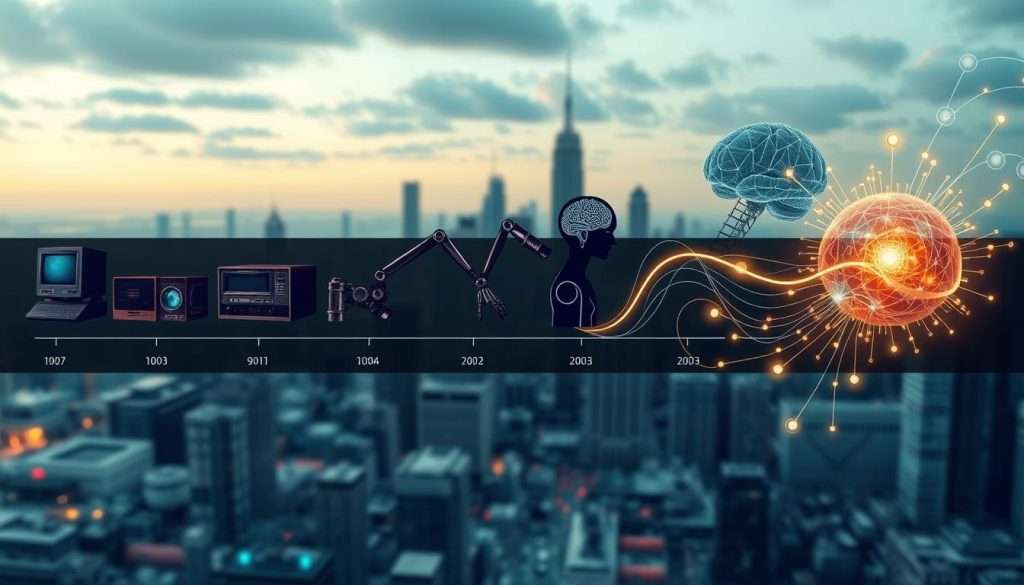
Key Takeaways
- The journey of artificial intelligence spans over 80 years, evolving from the first digital computers to today’s advanced AI systems.
- Rapid advancements in training computation have fueled the exponential growth of AI capabilities, with recent models millions of times more powerful than a decade ago.
- AI systems now outperform humans in tasks such as language comprehension, image analysis, and content creation.
- The impact of AI is widespread, transforming industries, job markets, and our daily lives, presenting both challenges and opportunities.
- The evolution of artificial intelligence has been a testament to the human spirit, showcasing our relentless pursuit of innovation and the boundless potential of technology to shape our world.
The Dawn Evolution of Artificial Intelligence: Origins and Early Concepts
The origins of artificial intelligence (AI) can be traced back to ancient myths and ideas about creating intelligent beings. Throughout history, humans have been fascinated by the concept of bringing life to creations, from the automata of ancient Greece to medieval stories of golems and homunculi.
Ancient Myths and Mechanical Beings
Old myths, like the story of Talos, the bronze giant, and Pygmalion’s statue, show people’s wish to create smart beings. These stories helped start the study of AI.
From Greek Automata to Medieval Legends
The ancient Greeks made big steps in creating machines, called automata, that could do simple things. These early works in automation and machines helped start AI ideas. In the Middle Ages, stories of golems and alchemy kept the dream of creating life alive.
Early Philosophical Foundations
Old thinkers, like Pythagoras, thought numbers could explain the world. This idea helped start AI. The Indo-Arabic number system, with zero, also helped create AI’s base.
The long history of AI shows our never-ending wish to make smart things. It also shows our ongoing quest to know where nature ends and art begins.
Formal Reasoning and Mathematical Foundations
The beginnings of AI technology and its development can be traced back to the ideas of ancient thinkers. Aristotle, Euclid, and al-Khwārizmī set the stage for AI’s logic. Their work is key to AI’s growth.
Later, European scholars like William of Ockham and Duns Scotus built on these ideas. They helped make logical thinking and organized ways of understanding better. Ramon Llull even made machines for making knowledge, inspiring others like Gottfried Leibniz.
In the 17th century, thinkers like Leibniz, Thomas Hobbes, and René Descartes tried to express thoughts using math. This idea helped start Evolution of artificial intelligence. Their work showed how machines could think like us, leading to today’s ai technological advancements.
| Year | Milestone | Impact |
|---|---|---|
| 1960s | The Logic Theorist, developed by Allen Newell and Herbert A. Simon, was among the first AI programs that could mimic human problem-solving skills and prove mathematical theorems. | This early program showed that AI could solve tough problems. It set the stage for AI’s future. |
| 1970s-1980s | The AI Winter occurred as AI research hit a plateau due to reduced funding and interest, driven by unrealistic expectations and technical limitations. | The AI Winter highlighted the importance of setting realistic goals and understanding the difficulties of AI. It was a setback but also a chance to learn. |
| 1950s | The Dartmouth Conference led by John McCarthy coined the term “Evolution of artificial intelligence” and became a pivotal event in the establishment of AI as a field for scientific inquiry. | The Dartmouth Conference was a big step in the development and Evolution of artificial intelligence. It brought experts together and marked the beginning of AI as a scientific field. |
The journey of AI development was challenging and took many years. Many pioneers contributed to making today’s AI possible. Understanding this history shows us how much progress we’ve made and what lies ahead.
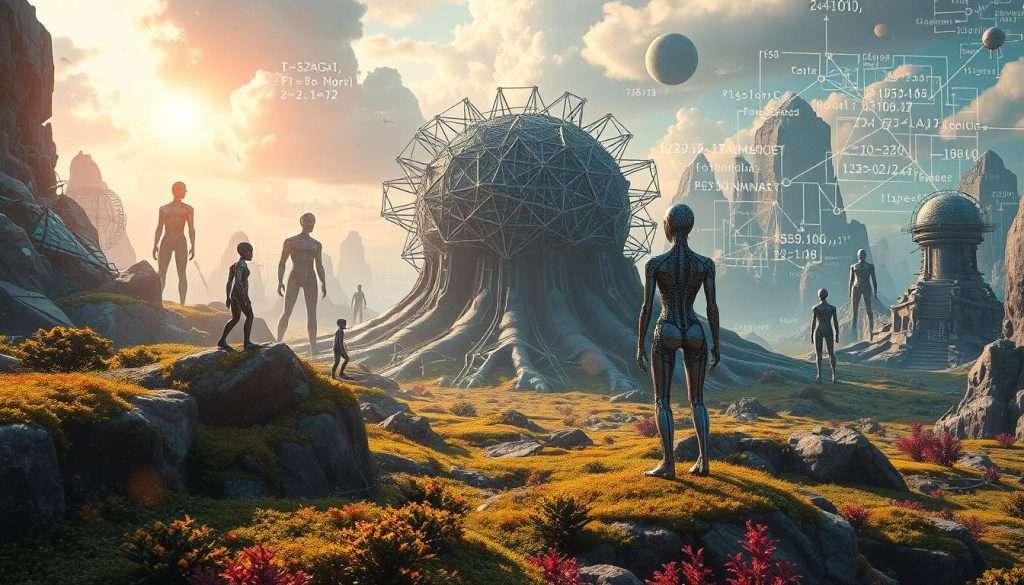
The Birth of Modern Computing Evolution of Artificial Intelligence
The start of modern computing was a big step for Artificial Intelligence (AI). In the 1940s, the first digital computers were made. This led to big steps in AI research and development.
This time also saw the rise of AI leaders. AI became its own field of study.
First Electronic Computers
The 1940s brought the first electronic computers. The ENIAC and UNIVAC I were among them. These machines started the digital age.
They could handle lots of data. This was the start of AI’s journey.
Programming Breakthroughs
Programming made big strides in the 1940s too. New programming languages like Lisp were created. This let researchers write code for machines.
It opened doors for AI to grow. It set the stage for AI’s future.
The Dartmouth Conference of 1956
The Dartmouth Conference in 1956 was a key moment. It was led by John McCarthy and others. They wanted to make machines as smart as humans.
This meeting was the start of AI as we know it. It brought together experts from different fields. They worked together to make AI progress fast.
The ai innovation timeline and ai progress over time show how AI began. These moments changed how we use technology today.
Evolution of Artificial Intelligence: From Theory to Practice
Evolution of Artificial intelligence (AI) has grown a lot since the 1950s. Back then, Alan Turing and the Dartmouth conference in 1956 started AI. This event, led by John McCarthy, was key for AI’s growth.
In the 1960s and 1970s, AI started to become real. ELIZA, the first chatbot, and Shakey the Robot showed AI’s early skills. These steps led to more advanced AI later on.
The 1980s were tough for AI, known as the “AI winter.” But, the 1990s brought AI back with new tech and data systems.
Now, AI has made huge leaps in machine learning and more. IBM’s Watson and virtual assistants like Siri have changed many areas. AI is now a big part of our lives.
AI’s journey shows how far we’ve come. It’s a story of human creativity and the drive for new tech. As AI keeps growing, its impact will only get bigger.
| Era | Advancements |
|---|---|
| 1950s | Conceptualization of AI by Alan Turing and the Dartmouth conference |
| 1960s-1970s | Development of ELIZA and Shakey the Robot, demonstrating basic problem-solving abilities |
| 1980s | The “AI winter” due to unmet expectations and funding cuts |
| 1990s-2000s | Resurgence in AI research, advancements in machine learning and natural language processing |
| 2010s-Present | Breakthroughs in AI, including IBM’s Watson, virtual assistants like Siri and Alexa, and ongoing research in artificial general intelligence |
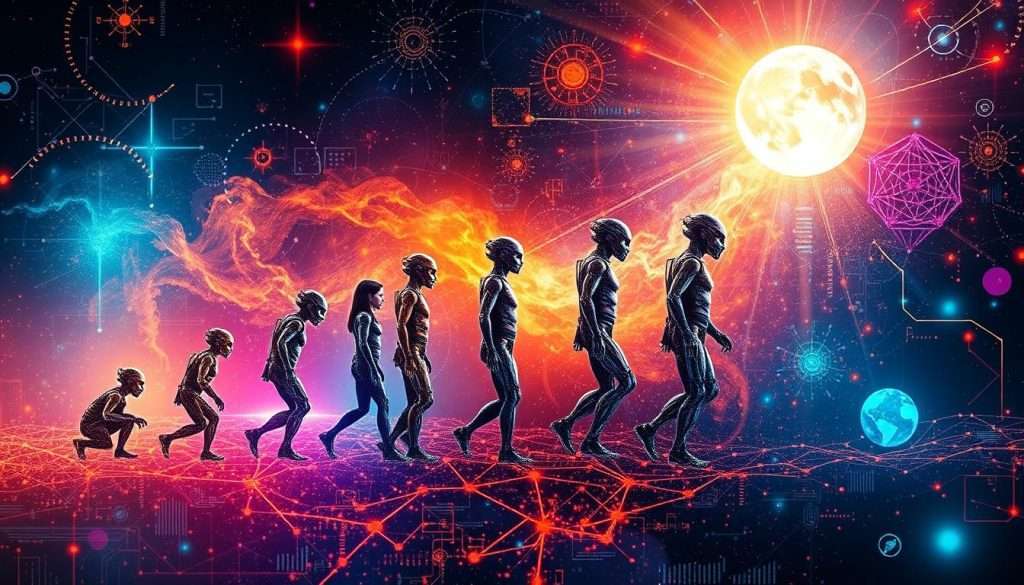
“The field of artificial intelligence has come a long way from its conceptual origins, transforming from theoretical ideas to practical, real-world applications that are reshaping numerous industries and daily life.”
Early AI Systems and Their Capabilities
The journey of artificial intelligence (AI) has been amazing. It started with big breakthroughs and small steps. Early researchers set the stage for today’s tech.
Some key early AI systems and their abilities include:
The Theseus Project
The Theseus project was a big step in AI. Claude Shannon created it in 1950. It was a robot that solved mazes, showing it could make decisions.
Logic-Based Systems
In the 1960s and 1970s, AI focused on logic-based systems. These systems tried to think like humans using formal logic. The MYCIN program for medical diagnosis was one example.
Pattern Recognition Advances
At the same time, AI made big steps in pattern recognition. These advances helped create machine learning and computer vision. Early systems were simple but paved the way for today’s tech.
Even though these systems were simple, they were big steps in AI history. They showed machines could be smart, preparing the way for future advancements.
The First AI Winter and Its Impact
The journey of artificial intelligence (AI) has seen ups and downs. The first AI winter happened in the 1970s. It was a time of big hopes and then doubts.
Many, including James Lighthill, started to doubt AI’s big promises. Lighthill’s 1973 report was especially harsh. It said AI had not lived up to the big expectations.
The Mansfield Amendment made things worse. It cut off DARPA funds for many AI projects. This slowdown hurt the ai development timeline and the evolution of artificial intelligence.
But, the first AI winter didn’t stop everything. Researchers kept exploring new ideas. Breakthroughs in neural networks and machine learning helped AI grow again in the 1980s.
“In 1957, Herbert Simon predicted that within 10 years a computer would be a chess champion and a machine would prove a significant mathematical theorem; these predictions came true within 40 years.”
The first AI winter taught a big lesson. It showed the need to be realistic and make small steps. This lesson helped AI keep moving forward in the years that followed.
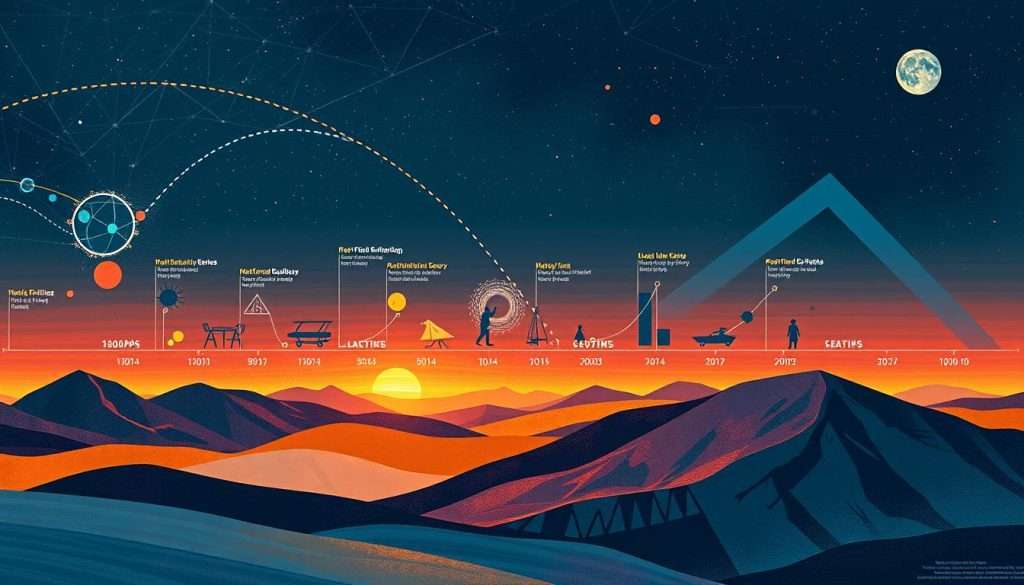
Renaissance of AI Research in the 1980s
The 1980s saw a big jump in artificial intelligence (AI) research. This was thanks to government support and the success of expert systems. AI became a huge industry, with people working hard to make smarter machines.
Expert Systems Era
In the 1980s, expert systems became a big deal in AI. They were like human experts in certain areas, like diagnosing diseases (MYCIN) or setting up computer systems (XCON). This showed how far AI had come, especially in using symbols and rules to understand knowledge.
Neural Networks Revival
The 1980s also brought back interest in neural networks. This idea had been around since the 1940s and 1950s. It helped pave the way for big advances in machine learning and deep learning later on.
The 1980s were a key time in the ai innovation timeline. It was a time of big discoveries in ai progress over time. This period helped create the AI we use today.
Machine Learning Breakthroughs
The field of ai breakthroughs has seen big steps forward in recent years. This is thanks to the fast growth of machine learning. Machine learning uses math to make computers learn from data without being told how.
Strong computers and lots of data have helped machine learning grow. Now, machines can solve hard problems and even do better than people in some areas.
- In control engineering, ai helps predict and improve system performance.
- Deep learning is key for recognizing images and understanding language.
- Convolutional neural networks (CNNs) are great for image tasks. Recurrent neural networks (RNNs) are best for language.
- Reinforcement learning (RL) lets machines learn by trying things. It helps in self-driving cars and robots.
- NLP advancements by RNNs have made machines talk like us. This has led to chatbots and conversational AI.
- Voice recognition has improved a lot. Now, we have virtual assistants that can understand and act on voice commands.
As ai keeps getting better, it’s changing how we live and work. It’s making technology a big part of our lives.
| AI Breakthrough | Application | Impact |
|---|---|---|
| Deep Learning | Image Recognition, Natural Language Processing | Enables machines to excel at uncovering patterns in massive datasets, surpassing human-level performance |
| Reinforcement Learning | Robotics, Self-Driving Cars | Enables machines to learn through trial and error, optimizing decision-making processes |
| Natural Language Processing | Conversational AI, Virtual Assistants | Transforms how machines comprehend and interact with human language, facilitating more natural interactions |
AI is still getting better, with new things like explainable AI and quantum computing coming. These will change how we use and interact with artificial intelligence even more.
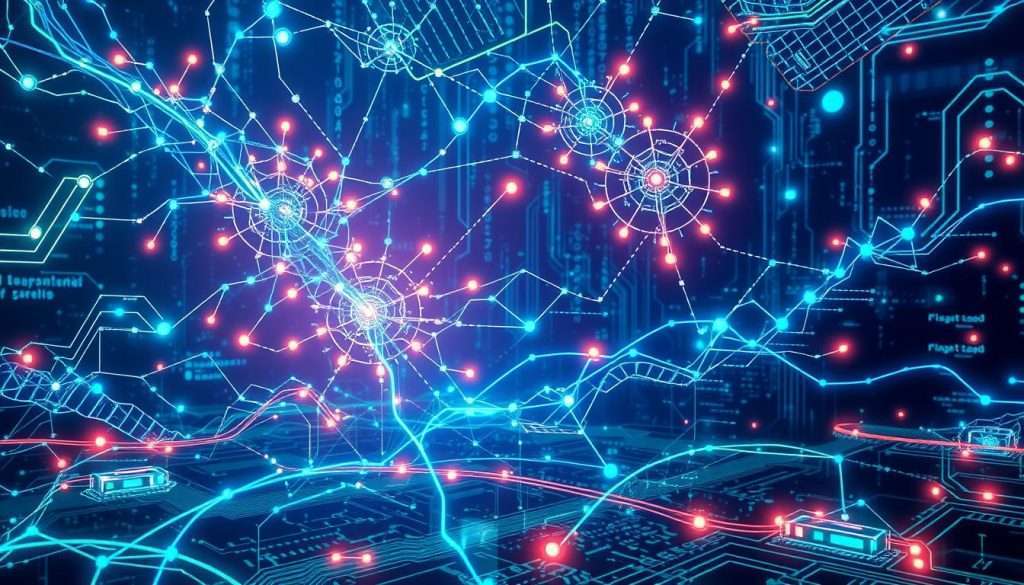
“The true impact of ai breakthroughs will be realized when the technology is seamlessly integrated into our daily lives, enhancing our experiences and empowering us to achieve more.”
The Rise of Deep Learning
The journey of artificial intelligence (AI) has been exciting. Deep learning has been a big step forward. It lets machines see and talk to us in new ways. This has helped a lot in areas like seeing pictures, understanding speech, and talking like humans.
Neural Network Architectures
Deep learning is based on the brain’s structure. Over time, these brain-like models have gotten better. They can now handle more complex tasks.
From the early Neocognitron in the 1970s to today’s image-recognizing CNNs, design has improved a lot.
Training Innovations
Training deep learning models has also seen big changes. Back in the 1970s, Seppo Linnainmaa first talked about backpropagation. Later, in the 1980s, Rumelhart, Williams, and Hinton used it for neural networks. This helped models learn from lots of data.
Also, better computers and GPU-accelerated computing have helped train models faster. This has made deep learning more powerful.
The ai evolution stages and the development of artificial intelligence have seen huge leaps thanks to deep learning. It has opened up new possibilities in many areas. As deep learning keeps getting better, AI’s future looks very promising.
Natural Language Processing Revolution
The field of artificial intelligence has seen a big change in Natural Language Processing (NLP). This is the ability of machines to understand and use human language. NLP is key to ai breakthroughs, making AI talk like us. It helps machines and humans communicate better and opens new doors in many fields.
NLP started in the 1950s with Alan Turing’s work. Over time, it moved from simple rules to using statistics and now deep learning. This change has made NLP much better.
Neural networks and word embedding techniques like Word2Vec have made NLP systems better. These models do tasks like tokenization, part-of-speech tagging, and named entity recognition better than old methods. They also do well in parsing, sentiment analysis, machine translation, and text summarization.
Google’s PaLM is a great example of NLP’s power. It can understand jokes and complex language. These ai innovation timeline advances have changed many areas, like healthcare and education.
| NLP Task | Description |
|---|---|
| Tokenization | Dividing text into meaningful units (e.g., words, punctuation) for further processing. |
| Part-of-Speech Tagging | Identifying the grammatical role of each word (e.g., noun, verb, adjective). |
| Named Entity Recognition | Identifying and classifying named entities (e.g., people, organizations, locations). |
| Parsing | Analyzing the grammatical structure of a sentence to understand its meaning. |
| Sentiment Analysis | Determining the emotional tone or attitude expressed in a piece of text. |
| Machine Translation | Translating text from one language to another. |
| Text Summarization | Generating concise summaries of longer text documents. |
NLP is still growing, with new areas like multimodal NLP and explainable AI. These new areas will make NLP even more powerful. They will keep NLP at the heart of ai breakthroughs and the ai innovation timeline.
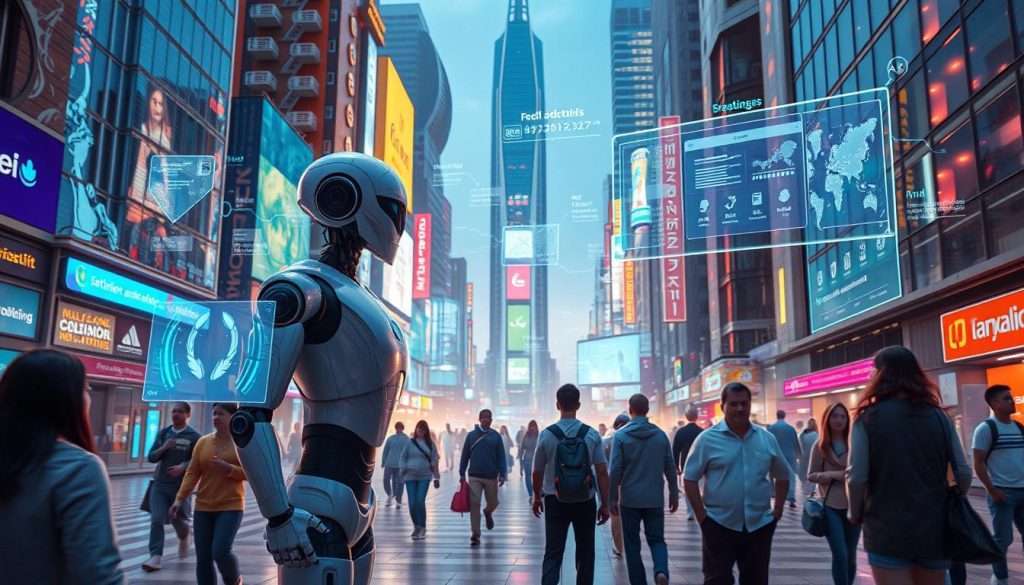
Computer Vision and Image Recognition Advances
Computer vision and image recognition have made huge leaps forward. This is thanks to advances in AI technology and ongoing progress. A big breakthrough has been the creation of Convolutional Neural Networks (CNNs). These networks have changed how machines see and understand images.
Convolutional Neural Networks
Convolutional Neural Networks have been a big deal in image recognition. These deep learning models can find detailed features in images. This lets AI systems do tasks as well as humans in many areas.
CNNs learn from lots of visual data. This has made them very useful in many fields.
Real-World Applications
Computer vision and image recognition have led to many uses in real life. Facial recognition has improved a lot. It helps with identity checks, security, and more.
In healthcare, these technologies help doctors diagnose diseases better and faster. This makes healthcare more efficient.
Image recognition in e-commerce makes shopping better. It helps find products, suggest items, and try on clothes virtually. Computer vision also helps self-driving cars navigate by understanding their surroundings.
“Computer vision has revolutionized various industries, from healthcare to automotive, by empowering machines with the ability to see and understand the world around them.”
But, there are worries about AI misuse, like deep fake videos and fake-porn. It’s important to use these technologies wisely. We need to think about ethics and protect privacy and security.
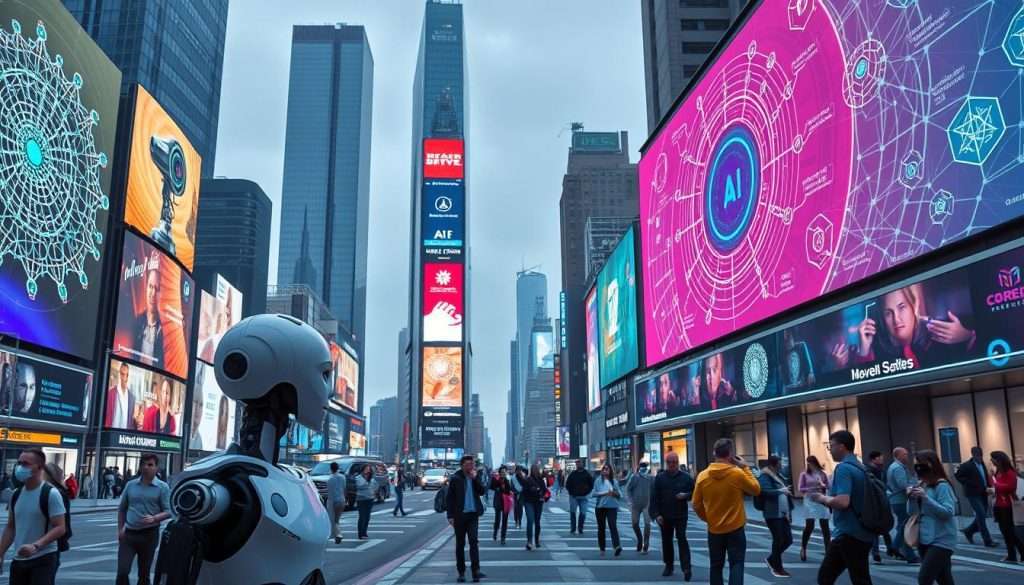
The future of computer vision and image recognition is bright. It will help improve augmented reality, medical images, and education. As AI keeps getting better, these technologies will change many industries and our lives.
AI in the Modern Era: Transformers and Beyond
The world of artificial intelligence (AI) has seen big changes. The transformer architecture, introduced in 2017, was a major breakthrough. It was created by Google researchers and has changed AI a lot.
Now, transformers are everywhere in AI. Models like ChatGPT, GPT-4, Midjourney, Stable Diffusion, and GitHub Copilot use them. They’ve made AI better at understanding language and doing other tasks too.
In just a few years, AI has made huge leaps forward. Transformers are key to this progress. They make AI work faster and smarter. But, they also need a lot of power, causing chip shortages worldwide.
FAQ
What is the history of artificial intelligence?
Artificial intelligence has a long history. It started with ancient myths and legends. Today, AI can understand and create human language and images.
When were the first digital computers invented?
The first digital computers were made about 80 years ago. They helped start the AI journey.
What were the early philosophical foundations of AI?
Early AI ideas came from ancient thinkers. Chinese, Indian, and Greek philosophers helped. Also, myths like Talos and Pygmalion’s statue played a role.
How did the Dartmouth Conference in 1956 impact the field of AI?
The Dartmouth Conference in 1956 started AI as we know it. It brought together top AI minds. They shaped AI for many years.
What were the early stages of AI evolution?
AI started with ideas and grew into real uses. It went from logic to learning machines. Each step made AI smarter.
What was the impact of the first AI winter?
The first AI winter was in the 1970s. It was caused by criticism and less funding. But AI didn’t stop growing.
What drove the resurgence of AI research in the 1980s?
The 1980s saw AI grow again. Japan helped, and expert systems worked well. AI became a big industry, and neural networks came back.
How did machine learning contribute to AI advancements?
Machine learning became key in AI. It used math to learn from big data. Fast computers and lots of data helped AI get better.
What was the impact of deep learning on AI?
Deep learning was a big step forward. It made AI smarter and more complex. New training methods helped deep learning grow.
How did AI make advancements in natural language processing?
NLP got a lot better. AI can now understand and make human language. Google’s PaLM shows how well AI can get language.
What were the advancements in computer vision and image recognition?
Computer vision and image recognition improved a lot. AI can now recognize images like humans. It’s used in many areas, like cars and health.
How did the transformer architecture impact AI capabilities?
The transformer architecture changed AI a lot. It’s especially good for language and making images. Today, AI can do amazing things in many areas.


One Response